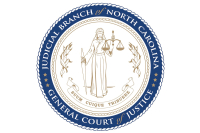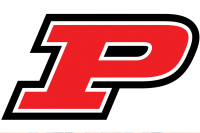Dogwoods in the mountains
In the Smokies region, there are three species of dogwood. Everyone is familiar with flowering dogwood (Cornus florida), which is starting to flower this week, but the others are less well known.
Alternate-leaved or pogada dogwood (C. alternifolia) is the only alternate-leaved dogwood in North America. It’s a small tree (15-25 feet tall) that grows in rich woods, producing greenish-white flowers in late spring and handsome dark blue-black fruits on reddish stems in late summer. Frequent at all elevations, it is perhaps more common in the middle to higher elevations
Silky dogwood (C. amomum) is a coarse shrub that grows in marshes or along stream banks. Its whitish, relatively flat flower heads appear in mid-spring. The fruit turns black as the season progresses.
If the cardinal is the signature bird of the southeastern United States, flowering dogwood is the signature tree. It is so widely admired that numerous cultivated varieties have been developed, including the popular pink “rubra” form.
Pause to take a closer look this spring at a dogwood inflorescence. Numerous tiny yellow flowers, each bearing four petals, will be clustered at the center. This cluster will be bordered by four large petal-like bracts. These shining white bracts, which can be seen from afar, serve the same purpose as petals — they attract insects to the tiny flowers that gather nectar and, in the process, pollinate the tree.
In just about every spring identification workshop I lead there will be someone who will ask in a loud voice, “You know, don’t you, the best way to recognize a dogwood tree?” While everyone else is groaning, the same person will quickly answer, “By its bark.”
Related Items
Well, a dogwood tree’s “bark” is distinctive in that it is broken into tiny squares one inch or less across. But according to one source, the common name derives from the fact that the inner bark was once used to make a strong medicine for washing sick dogs. And according to another source the name comes from “dagwood,” from the use of the slender stems of its very hard wood for making “dags” (i.e., daggers and skewers).
The Indians called it “arrow wood” — a clear indication of how they used the branches. The pioneers made horse collars, cogs for gristmills, and shuttles for weaving looms from dogwood.
Our mountain landscape would be severely reduced by an absence of flowering dogwood. The anthracnose fungus that has devastated Pacific dogwood (C. nuttallii) in the northeastern United States and flowering dogwood in parts of the eastern United States has also been a problem in portions of the Smokies region. An informative USDA Forest Service site titled “How to Identify and Control Dogwood Anthracnose” can be accessed at: http://www.na.fs.fed.us/spfo/pubs/howtos/ht_dogwd/ht_dog.htm.
George Ellison wrote the biographical introductions for the reissues of two Appalachian classics: Horace Kephart’s Our Southern Highlanders and James Mooney’s History, Myths, and Sacred Formulas of the Cherokees. In June 2005, a selection of his Back Then columns was published by The History Press in Charleston as Mountain Passages: Natural and Cultural History of Western North Carolina and the Great Smoky Mountains. Readers can contact him at P.O. Box 1262, Bryson City, N.C., 28713, or at This email address is being protected from spambots. You need JavaScript enabled to view it..









